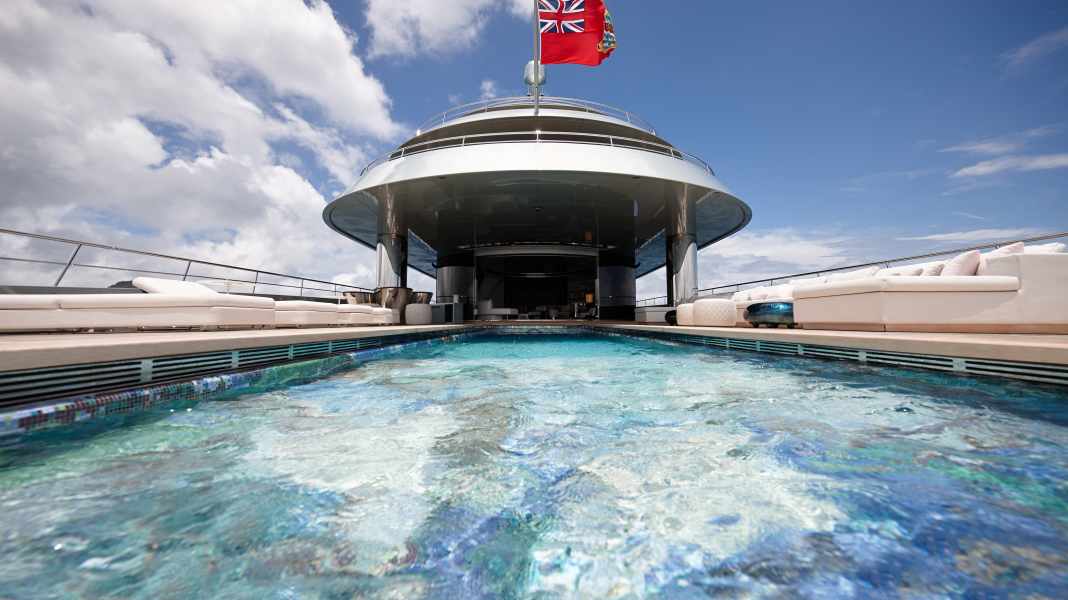
It started with a student project in 2019, a test basin simulated the effect of yacht movements on the water: an inclined floor swayed with the current. "This paved the way for more sophisticated solutions with rubber walls, air cushions and finally the current system," says project manager Marc Levadou, responsible for knowledge & innovation at Feadship. He expanded his team to include De Voogt engineers and students, who calculated, tinkered and tested countless variants.
In 2020, they brought the first version to the Dutch Marine Research Institute (MARIN) to test its efficiency on the institute's Hexapod, a machine that mimics every known movement of a ship. The researchers optimised Levadou's ideas and launched another round of tests. The resulting standards and workflows became part of all design discussions until 2023.
Superyacht Pools: Sloshing comes out of nowhere
You are powerless against storms. The type of sloshing that Levadou and his team wanted to combat was the phenomenon that occurs in seemingly completely calm water, such as when anchored in a bay. "I'm talking about the almost imperceptible resonance caused by the typical movements of the ocean," says Levadou. "The sloshing often seems to come out of nowhere. A basin without damping then quickly becomes a nuisance for everyone."
Levadou and his team developed a calculation programme to determine the design parameters that contribute to or reduce small waves. Using this tool, they created a manual with construction standards for pool design. This includes ideas such as the integration of benches and stairs as intelligent solutions based on calculation data. For example, curved pool edges do little to reduce sloshing, while water level and depth make a big difference. Horizontal drain openings have twice the damping effect of vertical ones. And pool steps with a 1.5-fold vertical ratio are more effective than other types of steps.
Like a wave pool, only the other way round
The best way to avoid sloshing is to imitate the natural slope of a beach. At the heart of ContraWave™ technology is an air chamber that automatically regulates pool movement. The closed system anticipates and absorbs the waves before they can build up the energy to cross. The setup is connected by pipes under the pool and on the sides, making it invisible to guests. Using the Boundary Element Method (BEM), an anti-slosh system can be developed for any yacht and pool size. "The system does not react to the waves, but acts on its own," Levadou continues. "It works like a wave pool, but the other way round: instead of creating waves, it reduces them."
